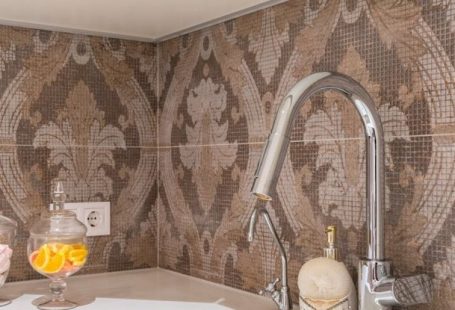Adding a rug to a room can instantly transform the space, adding warmth, texture, and a pop of color. However, choosing the right rug that complements your room can be a daunting task with endless options available in the market. From size and shape to material and pattern, there are several factors to consider to ensure that the rug enhances the overall aesthetic of your room. Here are some tips to help you select the perfect rug that ties the room together seamlessly.
Consider the Room’s Functionality
Before diving into the world of rug shopping, it is essential to consider the functionality of the room where the rug will be placed. Is it a high-traffic area like the living room or hallway, or a more low-traffic space such as the bedroom? For high-traffic areas, a durable and easy-to-clean rug material like wool or synthetic fibers would be ideal. In contrast, a plush and luxurious rug made of materials like silk or cotton can be perfect for a bedroom or sitting area where comfort is key.
Determine the Rug Size
One of the most common mistakes people make when choosing a rug is selecting the wrong size. A rug that is too small can make the room feel disjointed and visually unbalanced, while a rug that is too large can overwhelm the space. To find the right size rug, consider the dimensions of the room and the furniture layout. In the living room, for example, a rug should be large enough to fit under all key pieces of furniture or at least the front legs of the furniture to create a cohesive look.
Choose the Right Shape
Rugs come in various shapes, including rectangular, round, square, and runner. The shape of the rug can significantly impact the overall feel of the room. Rectangular rugs are versatile and work well in most spaces, while round rugs can soften the sharp angles of a room and add visual interest. Runner rugs are perfect for narrow spaces like hallways or entryways, adding both style and functionality.
Select a Suitable Material
The material of the rug not only affects its durability but also its look and feel. Natural materials like wool and jute are great for adding warmth and texture to a room, while synthetic fibers like polyester and nylon are more stain-resistant and easier to clean. Consider the maintenance requirements and the overall aesthetic you want to achieve when selecting the material of the rug.
Coordinate with Existing Decor
When choosing a rug, it is crucial to consider the existing decor of the room. The rug should complement the color scheme, furniture, and style of the space rather than clash with it. If you have a room with neutral furniture and walls, a bold and patterned rug can add a pop of color and personality. On the other hand, if the room already has a lot of patterns and textures, a solid-colored rug can help balance the design.
Experiment with Patterns and Colors
Rugs are a great way to introduce patterns and colors into a room, creating a focal point or tying different elements of the decor together. When selecting a rug with a pattern, consider the scale of the pattern in relation to the size of the room and the furniture. Bold patterns can make a statement, while more subtle patterns can add depth and visual interest without overwhelming the space. Similarly, choose colors that complement the existing color palette of the room or add a contrasting pop of color for a dynamic look.
Incorporate Texture
Texture plays a significant role in adding depth and visual interest to a room. Consider the texture of the rug in relation to the other textures present in the room, such as smooth surfaces, rough finishes, or soft upholstery. A textured rug like a shag or a braided rug can add warmth and coziness to a space, while a flatweave rug can bring a modern and sleek vibe.
Create a Cohesive Look
Ultimately, the goal when choosing a rug is to create a cohesive look that ties the room together harmoniously. The rug should complement the overall aesthetic of the room, enhancing its style and functionality. By considering factors like size, shape, material, color, pattern, and texture, you can select a rug that not only complements your room but also elevates its design to the next level.
Incorporating these tips into your rug selection process will help you make an informed decision that enhances the beauty and functionality of your space. Remember that a well-chosen rug can be a powerful design element that brings the room together, so take your time exploring options and finding the perfect rug that complements your room flawlessly.





